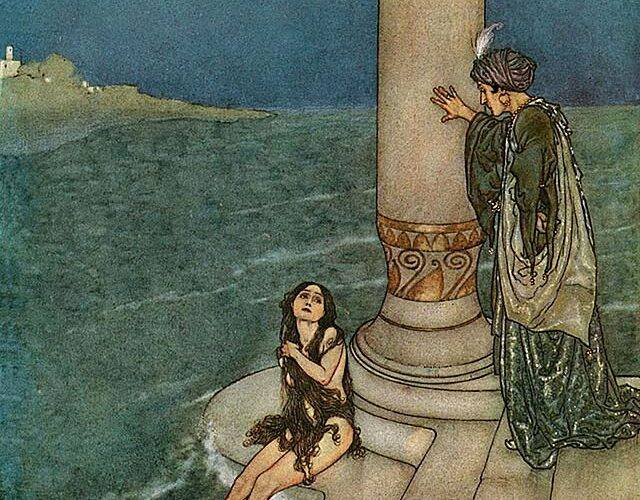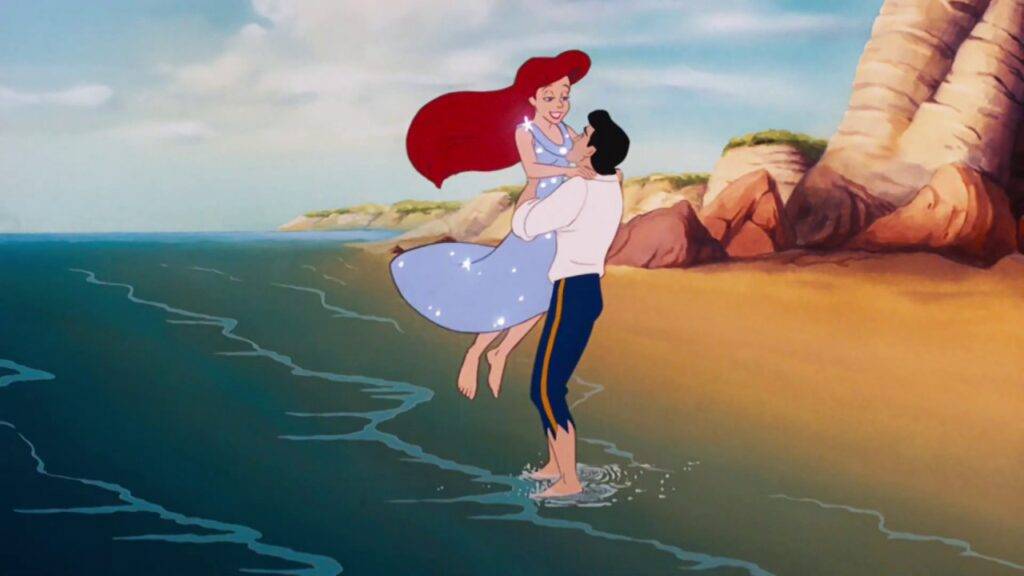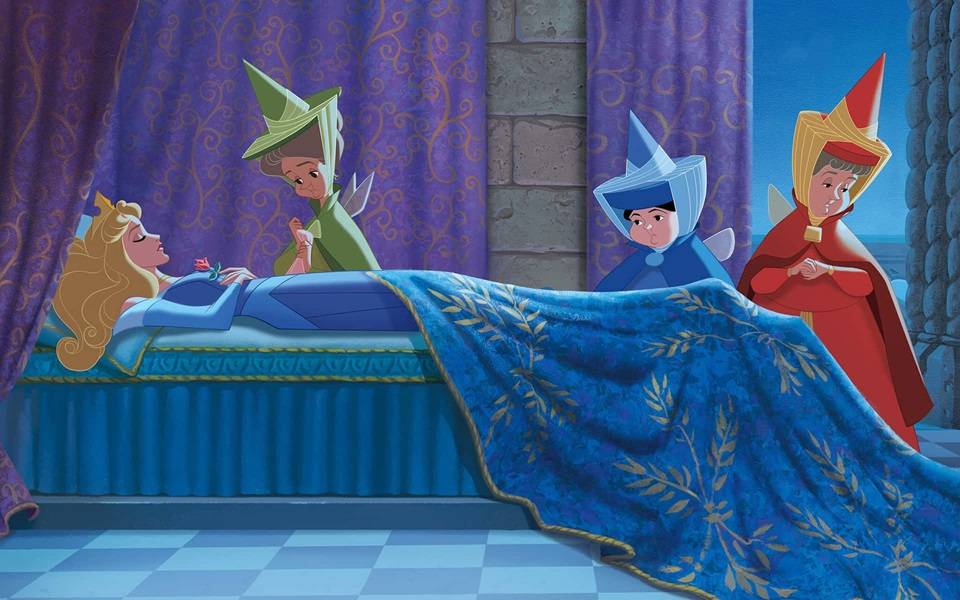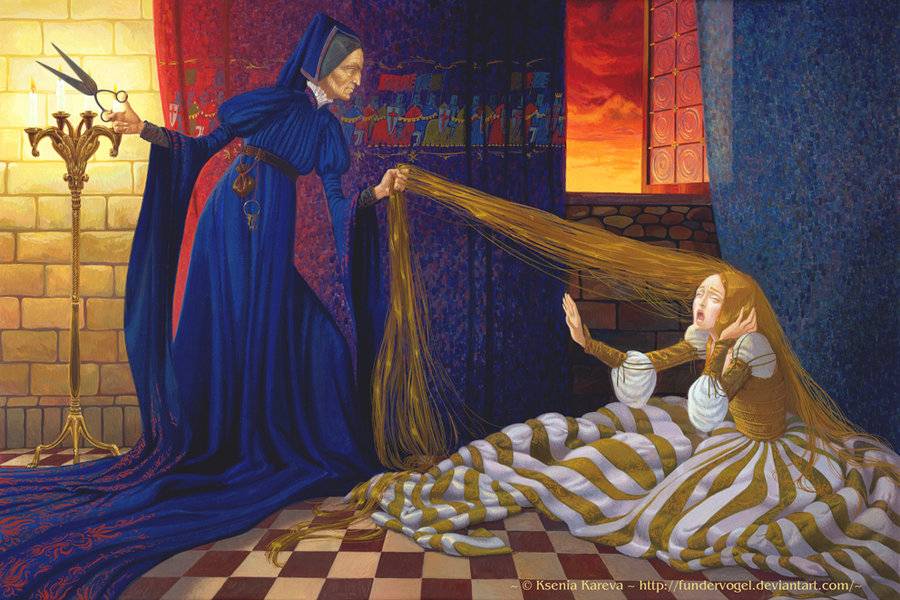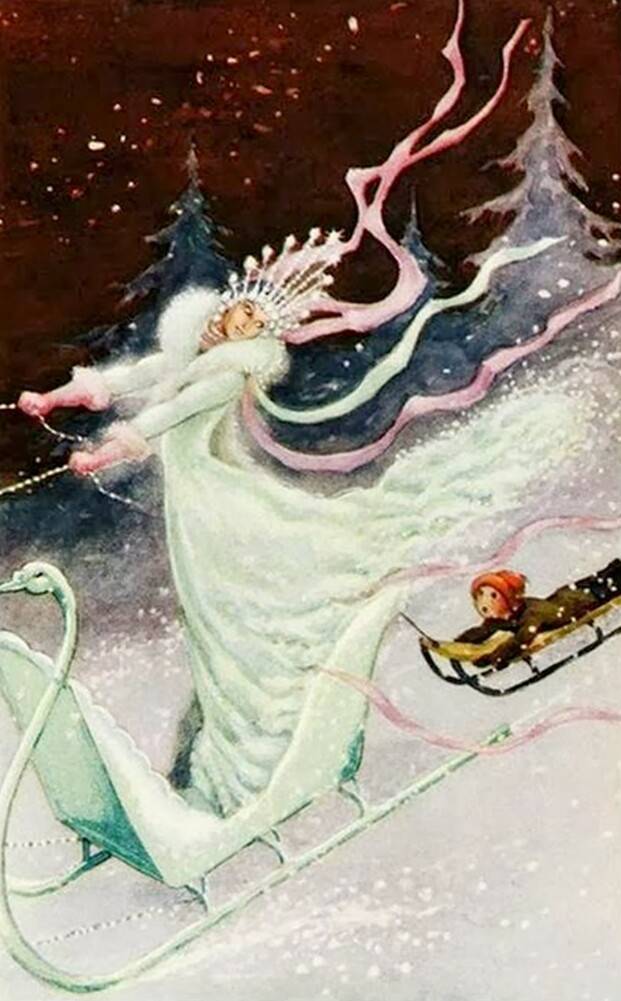Readers from any part of the world have not only heard but even grown with beautiful little fairy tales. These stories, created for children, are full of love, life, and happy endings, and not to forget, magic and mythical beings. Reading them made you believe that sadness is fleeting, and that’s beautiful to read about when you are little.
However, lurking beneath the feel-good tapestry of these fairy tales are its dark, disturbing origins. The original writers of stories like Snow White, Cinderella, and Sleeping Beauty made them so macabre they were unfit, even for children. It was only through thorough sanitization – mostly through Disney films – that the fairy tales became how you know them today.
Here are some of those fairy tales – along with their disturbing origins!
-
The Little Mermaid
The bright and eager red-headed mermaid falling in love with a human prince, that’s how one would summarise The Little Mermaid. Whatever trials she has to go through – at the hands of the sea witch – she finds her happily ever after anyway! But the story it stemmed from – written by Danish author Hans Christian Andersen – is much more violent. The Little Mermaid does fall in love with the prince, and she does make a deal with the sea witch. But the witch doesn’t steal her voice; she cuts her tongue out in exchange for giving the mermaid her legs.
As if that isn’t enough, consuming the potion will feel like someone shoved a sword through the body. Moreover, the mermaid will always feel her feet are on sharp knives, making her bleed terribly. The sea witch, in true villain fashion, also puts a condition that if the prince marries someone else, she will die and turn into sea foam forever. The little mermaid agrees and goes through excruciating pain to be with the prince, but he marries someone else. Well, humans have always been selfish – and this story is a testament to that.
The little mermaid, instead of killing him to get her mermaid self back, chooses to become sea foam. Though the new ending says she becomes the daughter of the air, both versions maintain that she dies.
-
Snow White and the Seven Dwarfs
Literature, theatre, movies, and even music videos have found their inspiration in the classic plot of Snow White and the Seven Dwarfs. Full of magic, quirky characters and, of course, a happy ending, the story shows how courage and love can thaw anything! And yet, the origin of Snow White is a much-debated topic, even after appearing first in the Brothers Grimm’s collection. Some claim it has mythical roots while some believe the brothers developed the idea based on a historical figure. Whatever the inspiration may be, the fact remains that it has some really dark scenes that’ll leave you squirming.
In the original tale, the queen is not the stepmother but her own mother, who hates her beauty. On top of this tragic point, the queen also orders the huntsmen to get Snow White’s heart, lungs and liver. Why? To cook and eat them, of course! The original story also doesn’t have Snow White waking up with a kiss but is actually dead. She only comes back to life when the prince bumps her casket, dislodging the poisoned apple from her throat.
The prince and Snow White get married, but the queen also reaches there to kill her daughter. However, the prince, finally aware of the truth, makes the queen dance in red-hot iron shoes. As you can imagine, her horrifying, agony-filled dance ends with her falling down to her death.
-
Sleeping Beauty
Sleeping Beauty paints an enchanting picture: A princess falling into a deep slumber, only awakened by a true love’s kiss. The story behind that sleep may not be as pretty, but at least the princess gets her happy ending with the prince! That’s the story readers know, and have seen in films.
The earlier Sleeping Beauty tales are quite similar – an evil sorceress’s curse, the spindle, and a good fairy’s solution. But this story has filtered through many versions preceding it, all of them exhibiting various shades of disturbing. In the earliest version, Perceforest, when the prince finds the princess, sleeping and naked, he jumps to have sex with her. After he leaves, she becomes pregnant and delivers a baby boy, all without stirring awake. It is her infant’s sucking on her finger that removes the flax chip, breaking her out of her sleep.
In Giambattista Basile’s version, Talia conceives twins, named Sun and Moon, without any idea of their father. The king does return and they end up falling in love, which the king’s wife ends up finding. The queen, in anger, orders the cook to kill, cook, and serve the twins to the king. But the kind-hearted cook serves lambs instead, saving the twins. She also tries to throw Talia in flames, but the king arrives on time and hears about the queen’s actions. He burns his queen and lives happily with Sun, Moon, and Talia.
-
Cinderella
Cinderella is the quintessential example of what a fairy tale is – and also the most famous one. The plethora of inspired media is proof of that. Moreover, there’s not much difference between the Cinderella story you see today and its older versions – except for one part. The story by the Brothers Grimm – Aschenputtel or The Little Ash Girl – features little self-mutilation and a lot of blood.
To fit their feet in golden slippers, the eldest stepsister chops her toes off and the middle one cuts off her heel. Cinderella’s dead mother sends doves to alert the prince of the blood in the slipper, leading to her and the prince’s happy ending. The Brothers Grimm modified the story in 1819 as well, adding the part where the doves peck at the stepsisters’ eyes. They go blind as a way to repent for their misdeeds against the new princess, making the family lead a disgraced existence.
It is chilling to read that the girls chopped off parts of their feet, mostly to obey their mother. Because she says, “Never mind, cut it off; when you are queen you will not care about toes; you will not want to walk.” This original story promotes greed, envy, and cruelty – something a children’s fairy tale shouldn’t have.
-
Rapunzel
Full of magic, love, and an evil mother, the 2010 Disney film had everyone saying, Rapunzel, Rapunzel, let down your hair! The movie had everyone in happy tears by the end, but you can’t say the same for the original versions. Rapunzel has many sources, the first being Petrosinella by Giambattista Basile. It was adapted in Charlotte-Rose de Caumont de La Force’s Persinette, which in turn influenced the Brothers Grimm’s story.
In the original version, the parents promise to give away their unborn child to the witch in exchange for something from her garden. That something differs in every tale, but it is rare enough that the mother’s cravings can’t be fulfilled with anything else. When their child grows up, the with collects her and locks her in the tower, visiting her regularly. Rapunzel spends her days singing, catching the attention of a prince with her heavenly voice. He climbs up, woos her and visits her at night to escape meeting the witch.
However, Rapunzel becomes pregnant, and the angry witch chops her hair and throws her into a forest to look after herself. The witch even lures the prince to the tower by imitating Rapunzel’s voice, and then pushes him off. He falls into a thorn bush, which saves him but leaves him blind. For years, the prince searches for Rapunzel blindly, ultimately finding her with their twin children. In another version, there are no children, but the witch faces a grisly death at the hands of a wolf.
-
Little Red Riding Hood
Little Red Riding Hood is unlike your normal fairy tale; well, it doesn’t have a prince nor a true love’s kiss. Instead, it is a story of a girl who encounters a wolf on her way to deliver food to her grandmother. The wolf reaches the grandmother’s house to pretend he’s her, then waits for the little girl to arrive. The girl with the red cape observes her grandmother looking different but believes the lies the wolf spews. The wolf then eats her as well and falls asleep, with them being rescued by a hunter who cuts him open.
In the version by Charles Perrault, the fairy tale just ends at the part where the wolf eats the little girl and goes to sleep. He uses this horrifying ending as a way to warn the young girls about sexual predators. If young women give in to their charms, they will get eaten by the wolves.
This bleak ending is triggering enough, but it gets even grislier in the 17th-century version! The wolf is sometimes a werewolf, who feeds the girl the flesh and blood of her dead grandmother. He then asks the girl to get in bed, but not before stripping her clothes and burning them in the fire. In some narratives, he succeeds in eating the girl, while in others, the girl recognizes what’s happening. She uses the need to ‘defecate’ as an excuse to run, making the wolf tie her with a string. She manages to put that string over something else and escapes.
-
The Snow Queen
The tale of The Snow Queen has circulated in the media since the mid-20th century. But it was only through Frozen that it gained its well-deserved recognition, even when the movies were loosely based on it. In the Disney movie, you see Elsa, or the snow queen, with her barely-controlled icy powers. When exposed, her abilities cast her as a villain, making her sister, Anna, go on a mission to set everything right. In the end, Elsa returns as the rightful queen, with a love-filled heart that allows her to control her powers!
As for Hans Christian Andersen’s The Snow Queen, the queen is actually the antagonist. She kidnaps a boy with shards of ice in his heart and eye and kisses him to make him forget about his sister. Back at her icy palace, she orders the boy to form the word she gave him to spell. She promises to let him go, but only after he spells the word eternity with the cold ice splinters. Sitting on a frozen lake, becoming almost immobile with the cold, he keeps rearranging the splinters to make the word.
Even though all is well, as his sister rescues him with a true act of love, the sister goes through an adventure of her own. And that journey involves meeting an evil sorceress, getting kidnapped by robbers, and fighting the army at the queen’s palace. This one doesn’t come across as disturbing at first glance. But having a child remain cold for days, even weeks, over a simple word is creepy in itself!
Final Words
The reason as to why these fairy tales have such dark origins is that they weren’t meant for children in the first place. For example, the Grimms’ fairy tales were supposed to be an archive of German oral tradition marketed towards adults and scholars. When the sales didn’t increase, they revised these tales in the latter editions to make them more kid-friendly.
On the other hand, people like psychologist Bruno Bettelheim and Harvard Professor Maria Tatar encourage children to read the original fairy tales. They claim reading them is essential for children’s emotional development, helping them be well-equipped for the future.
However, the bottom line remains – whether reading original fairy tales or the sanitized version, both are as entertaining. And it is up to you to choose which you’ll enjoy the most!

